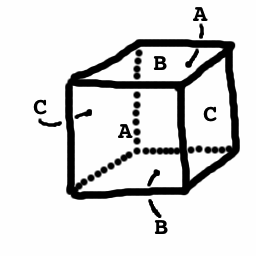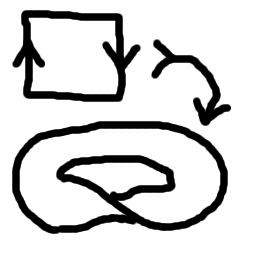3D Tic-Tac-Toe
You can also play Tic-Tac-Toe on a cube. What is the best strategy on this board? A harder game can be played by trying for 4-in-a-row on a 4x4x4 cube. Once you have played a few games of 3D Tic-Tac-Toe, try playing on the 3-torus; this is the space you get by identifying opposite sides of the cube, just as the torus is obtained by identifying opposite sides of the square.
|
 |







